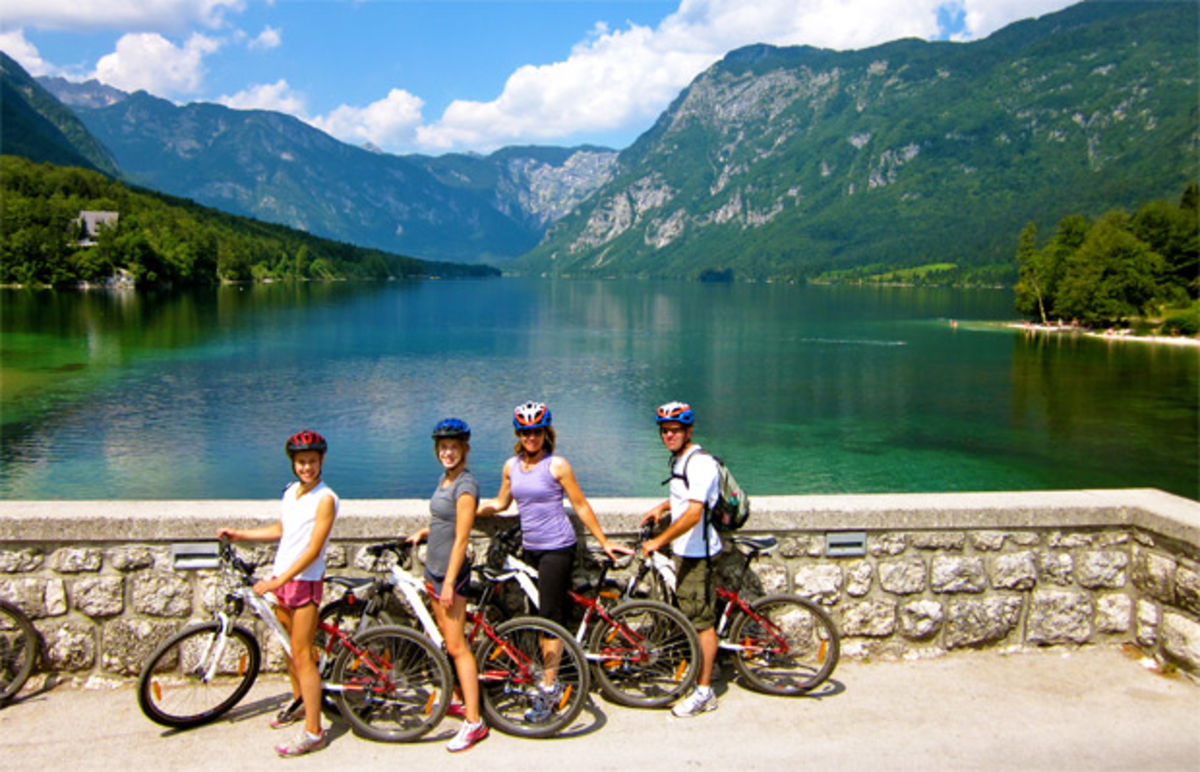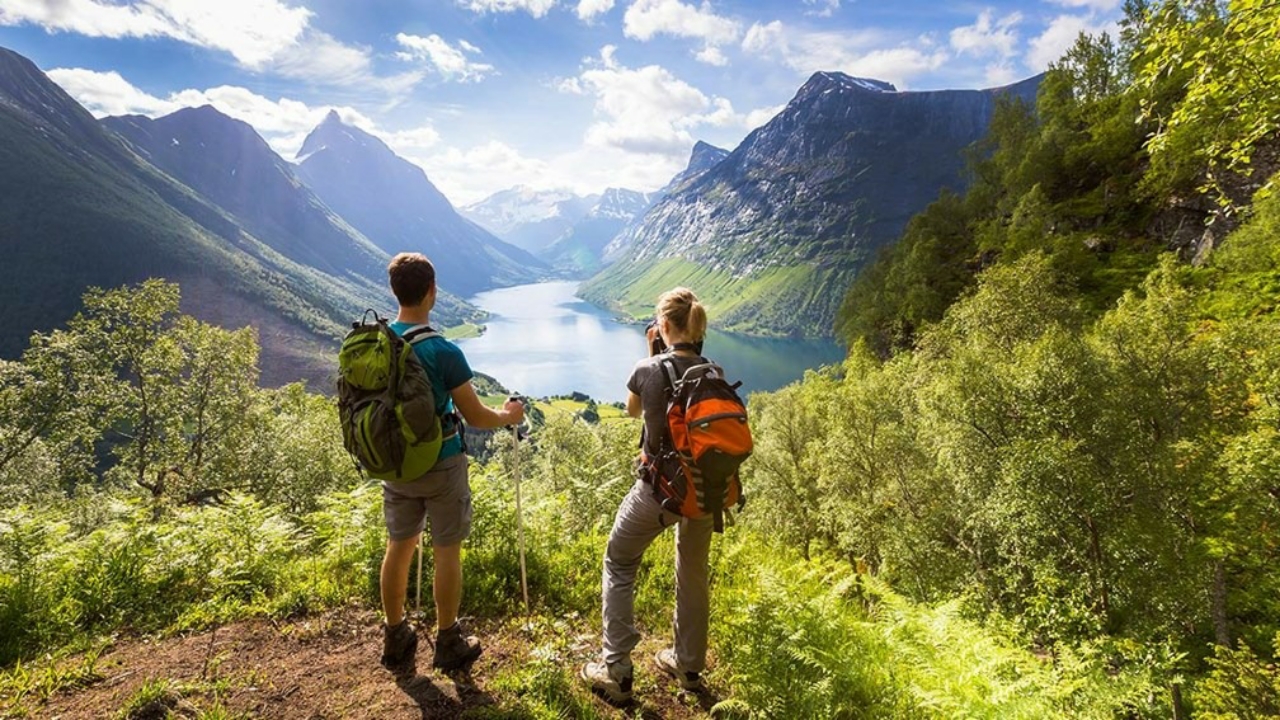As top adventure tourism destinations take center stage, this opening passage beckons readers into a world crafted with expertise, ensuring a reading experience that is both absorbing and distinctly original. Adventure tourism, with its diverse offerings and captivating experiences, has emerged as a global phenomenon, inviting thrill-seekers and nature enthusiasts alike to embark on extraordinary journeys.
From the towering peaks of the Himalayas to the vibrant depths of the Amazon rainforest, the world’s most captivating destinations await exploration.
This comprehensive guide delves into the key factors that influence tourists’ choice of adventure tourism destinations, exploring the delicate balance between safety, accessibility, cost, and cultural experiences. We’ll showcase destinations that excel in specific areas, inspiring you to plan your next adventure with confidence.
Adventure Tourism Destinations: Top Adventure Tourism Destinations
Adventure tourism, a form of tourism involving exploration or travel to remote, exotic, and often pristine areas, has gained immense popularity in recent years. It offers travelers an opportunity to engage in thrilling activities while immersing themselves in unique natural and cultural environments.
Adventure tourism encompasses a wide range of activities, including trekking, mountaineering, scuba diving, wildlife safaris, and extreme sports like bungee jumping and paragliding. These activities cater to individuals seeking physical challenges, cultural experiences, and an escape from the mundane.
Global Growth of Adventure Tourism
The global adventure tourism market has witnessed significant growth in recent years. According to a report by the Adventure Travel Trade Association (ATTA), the market was valued at $683 billion in 2019 and is projected to reach $1,423 billion by 2027, growing at a compound annual growth rate (CAGR) of 9.6%.
The growth is attributed to factors such as increasing disposable income, rising awareness of adventure activities, and the growing popularity of experiential travel. Adventure tourism has become an integral part of the tourism industry, attracting a diverse range of travelers seeking unique and memorable experiences.
Top Adventure Tourism Destinations

Adventure tourism has emerged as a popular travel segment, offering adrenaline-pumping experiences and opportunities to explore breathtaking natural landscapes. Adventure tourism destinations worldwide provide a diverse range of activities, catering to various interests and skill levels.
The following table showcases some of the top adventure tourism destinations globally, along with their key activities and a brief description:
Top Adventure Tourism Destinations
| Destination | Location | Key Activities | Description |
|---|---|---|---|
| Queenstown, New Zealand | South Island, New Zealand | Bungee jumping, skydiving, jet boating, hiking | Known as the “Adventure Capital of the World,” Queenstown offers a wide range of adventure activities in a stunning alpine setting. |
| Interlaken, Switzerland | Bernese Oberland, Switzerland | Paragliding, hang gliding, canyoning, rafting | Nestled amidst the Swiss Alps, Interlaken is a hub for outdoor adventure, providing breathtaking views and challenging activities. |
| Chamonix, France | Haute-Savoie, France | Mountaineering, rock climbing, skiing, snowboarding | Located at the foot of Mont Blanc, Chamonix is a renowned destination for alpine adventures, offering access to world-class ski slopes and challenging mountaineering routes. |
| Moab, Utah, USA | Grand County, Utah, USA | Off-roading, mountain biking, hiking, rock climbing | Situated in the heart of the Moab Desert, this town is a mecca for outdoor enthusiasts, providing endless opportunities for exploration and adventure. |
Factors Influencing Destination Choice

Tourists’ choice of adventure tourism destinations is influenced by a complex interplay of factors, including safety, accessibility, cost, and cultural experiences. Each of these factors plays a significant role in determining whether a destination will be perceived as attractive and desirable.
Safety is a paramount concern for adventure tourists. They want to ensure that they will be able to engage in their chosen activities without putting themselves at undue risk. Destinations that have a reputation for being safe and well-managed are more likely to attract adventure tourists than those that are perceived as dangerous or unstable.
Accessibility is another important factor to consider. Adventure tourists want to be able to reach their destination easily and conveniently. Destinations that are easily accessible by air, land, or sea are more likely to attract adventure tourists than those that are difficult to reach.
Cost is also a major factor for adventure tourists. They want to be able to afford the activities they want to do, as well as the accommodation and transportation they need. Destinations that offer a range of affordable options are more likely to attract adventure tourists than those that are expensive.
Cultural experiences are also an important consideration for adventure tourists. They want to be able to experience the local culture and learn about the history and traditions of the destination. Destinations that offer a rich cultural experience are more likely to attract adventure tourists than those that do not.
Examples of Destinations That Excel in Specific Factors
There are many adventure tourism destinations that excel in specific factors. For example, New Zealand is known for its safety and well-managed adventure activities. Costa Rica is known for its accessibility and affordability. Nepal is known for its cultural experiences.
And Switzerland is known for its stunning scenery and challenging alpine adventures.
Sustainable Adventure Tourism

Adventure tourism has the potential to have both positive and negative impacts on the environment and local communities. Sustainable adventure tourism practices aim to minimize the negative impacts and maximize the positive benefits of adventure tourism. This includes protecting the natural environment, respecting local cultures, and supporting sustainable economic development.
The environmental impacts of adventure activities can include pollution, habitat destruction, and wildlife disturbance. Social impacts can include cultural disruption, economic exploitation, and safety concerns. Sustainable adventure tourism practices can help to mitigate these impacts by using environmentally friendly practices, respecting local customs, and ensuring that local communities benefit from tourism.
Examples of Sustainable Tourism Initiatives
There are many examples of destinations that have implemented sustainable tourism initiatives. One example is Costa Rica, which has been a leader in sustainable tourism for many years. Costa Rica has protected over 25% of its land as national parks and reserves, and it has a strong commitment to sustainable development.
Another example is Bhutan, which has a policy of “Gross National Happiness,” which takes into account environmental, social, and economic factors when making decisions about tourism development.
Emerging Trends in Adventure Tourism
Adventure tourism is constantly evolving, with new trends and innovations emerging all the time. These trends are being driven by changing consumer preferences, technological advancements, and a growing awareness of the importance of sustainability.
One of the most significant trends in adventure tourism is the rise of experiential travel. Travelers are no longer just looking for a quick adrenaline fix; they want to have immersive experiences that connect them with the local culture and environment.
This is leading to a growing demand for tours that offer unique and authentic experiences, such as cooking classes, guided hikes, and wildlife safaris.
Technology is also playing a major role in shaping the future of adventure tourism. Smartphones and GPS devices are making it easier for travelers to navigate remote areas and find new adventures. Social media is also being used to share travel experiences and inspire others to explore new destinations.
Finally, there is a growing trend towards niche activities in adventure tourism. Travelers are increasingly looking for activities that are tailored to their specific interests, such as rock climbing, mountain biking, or scuba diving. This is leading to a proliferation of specialized tour operators that cater to these niche markets.
Examples of Tour Operators and Destinations Embracing Emerging Trends
- Intrepid Travel:This tour operator offers a wide range of experiential tours that focus on connecting travelers with local cultures and environments.
- G Adventures:This tour operator offers a variety of adventure tours that are designed to be both challenging and rewarding.
- National Geographic Expeditions:This tour operator offers a variety of adventure tours that are led by experts in their field.
- Costa Rica:This country is a popular destination for adventure tourism, offering a wide range of activities such as zip-lining, white-water rafting, and volcano hiking.
- New Zealand:This country is another popular destination for adventure tourism, offering a wide range of activities such as bungee jumping, skydiving, and glacier hiking.
Case Study: Adventure Tourism Destination Development
Adventure tourism destinations are carefully planned and developed to cater to the needs of adventure-seeking tourists. The development of these destinations involves various challenges, successes, and lessons learned. Here, we will examine a case study of an adventure tourism destination to understand the intricacies of its development.
One notable example is the development of Moab, Utah, as a premier mountain biking destination. Moab’s rugged terrain, slickrock formations, and extensive trail network have made it a popular spot for mountain bikers worldwide.
Challenges
Developing Moab as a mountain biking destination came with several challenges. The harsh desert environment required careful planning to ensure the sustainability of trails and infrastructure. Additionally, managing the influx of tourists while preserving the natural beauty of the area was a delicate balancing act.
Successes
Despite the challenges, Moab’s development as a mountain biking destination has been a resounding success. The town has embraced adventure tourism, leading to economic growth and job creation. The influx of tourists has also spurred the development of supporting businesses, such as bike shops, restaurants, and hotels.
Lessons Learned, Top adventure tourism destinations
The development of Moab as a mountain biking destination offers valuable lessons for other aspiring adventure tourism destinations. These include the importance of:
- Careful planning and environmental sustainability
- Community involvement and stakeholder engagement
- Effective marketing and promotion strategies
By incorporating these lessons, other destinations can successfully develop and manage adventure tourism destinations that are both economically viable and environmentally responsible.
Final Wrap-Up

As we conclude our exploration of top adventure tourism destinations, it’s evident that the future of this industry lies in embracing sustainable practices. By integrating environmental and social responsibility into our adventures, we ensure that these breathtaking destinations remain pristine and accessible for generations to come.
Let us continue to explore the world with a spirit of adventure, but always with a mindful eye towards preserving its beauty and respecting its people.
Helpful Answers
What are the most popular adventure tourism activities?
Adventure tourism encompasses a wide range of activities, including trekking, mountaineering, wildlife safaris, scuba diving, and white-water rafting.
How can I choose the right adventure tourism destination for me?
Consider your interests, fitness level, budget, and travel preferences. Research different destinations to find one that aligns with your expectations.
What are some examples of sustainable adventure tourism practices?
Sustainable practices include using eco-friendly transportation, staying in locally-owned accommodations, and supporting conservation efforts.
